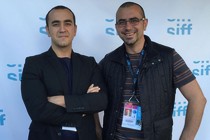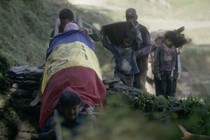White Sun, a portrayal of Nepal as it emerges from the rubble left behind by the civil war
- VENICE 2016: With a production that embraces Nepal, the USA, Qatar and the Netherlands, Deepak Rauniyar brings us a film that looks at and transcends the decade-long civil war

After making his international debut with his first film Highway, which was shown in the Panorama section of the Berlin Film Festival in 2012, a film that holds a world record as it was the first Nepalese production for the big screen to be screened at such a prominent international film festival, director Deepak Rauniyar now comes to the Orizzonti section of the 73rd Venice Film Festival with his second feature, White Sun [+see also:
trailer
film profile].
White Sun depicts the legacy of civil skirmishes left behind by the fratricidal Nepalese war that raged between 1996 and 2006 and saw bitter armed conflict between the Maoist rebels of the Communist Party, who wanted to overthrow the Nepalese dictatorial monarchy, and the government, which supported the king. Deepak Rauniyar starts his film with a metaphor: Chandra’s father, an old monarchist who firmly believes in the government in power, passes away, bringing his son back to the family village after years of absence. And thus the contrast is established: the lifeless body of the father represents the old constitution and the monarchic regime behind it, dying to give life to a new Nepal, the one which Chandra, an active supporter of the Maoist Party, has fought for and sees the birth of following the peace accord of 21 November 2006. Nepal went through a long and agonising civil war before being able to overcome the barriers imposed by the rigid caste system, and in the same way, it takes considerable physical exertion from the characters in the film to rid themselves of the body of the deceased and to do away with what is left of the monarchy.
Deepak Rauniyar entrusts the narration of the story to the pure and ingenuous outlook of two children: the granddaughter of the dead man, Pooja, and young brute Badri, a homeless orphan. With the way they’re so open to the world, it doesn’t matter how harsh it is on them. The two children seek shelter and comfort, Pooja in the attempt to give a face to her father who she has never known, and Badri by trying to get by in a country that has made him an orphan. Both children are the unwitting victims of the tragedy of war.
By choosing to use a handheld camera to get as close as possible to his characters, the director succeeds in conveying the weightiness of the physical exertion they undergo. Often deciding not to opt for a deep depth of field, but to direct the viewer’s gaze to the bodies being set alight, Deepak Rauniyar almost manages to give the viewer a sense of the stifling humidity of the place. But there is an opportunity for reconciliation on the horizon: whilst the adults argue amongst themselves, Pooja and Badri find the strength to carry on with the burial rites for the deceased, silencing the political discussions in favour of harmony between the generations. Then the body of Chandra’s father can be let go, and with the monarchy now just a distant memory, Nepal can blossom with its new democratic way of life.
Co-produced by the Netherlands (Waterland Film) with Nepal, the United States and Qatar, the film is being sold abroad by The Match Factory.
(Translated from Italian)
Did you enjoy reading this article? Please subscribe to our newsletter to receive more stories like this directly in your inbox.


























